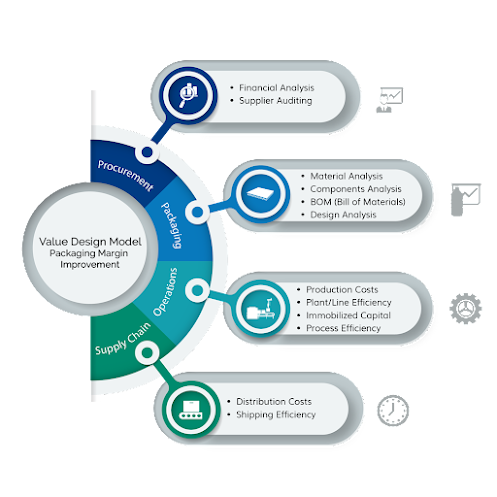Expenses should not be inflated by unnecessarily high packaging cost
Here are three of our best packing cost-cutting techniques.
Improve the processes of packaging
Reception, storage and maintenance at the correct inventory levels are the most important element of your packagings. If you have a supplementary packing warehouse, it consumes time and space and binds your money.
Furthermore, the longer package inventory remains in your warehouse, the more likely it may be damaged, become out of date when your branding, goods, or packaging objectives change or become misplaced among your other warehouse inventory. Add to that the risk of having to pay for expedited shipping for additional packaging if demand unexpectedly increases, and you'll begin to understand why having an inefficient packaging inventory strategy in place may deplete corporate resources.
So how can this packing element prevent your organisation from losing money? You must discover techniques to keep a better track of request as it alters and limit the quantity of storage space you utilise. One efficient option is to outsource the firm that makes your packaging to your inventory management so that it keeps a check on demand and ships the packaging you require when you need it.
Make Use of Space-saving Packaging
For smaller and lighter boxes shipping is often believed to be less expensive. Fortunately, corrugated packaging is easy to change and it is established as one of the lightenest packaging materials to give the correct size for a space-saving and cost-effective package.
The transportation industry has been using volumetric weight to compute cargo rates since 2015. The payable weight of a cargo larger than one cubic foot is calculated using dimensional weight (or DIM weight). It's calculated by multiplying the package dimensions (L x W x H) by a mathematical constant called the DIM component, which each carrier defines. The eventual billable weight is greater than the DIM weight or the actual weight.
This adaptation significantly affected the prices of big, light shipments as their weight, rather than its small real weight, would be estimated using their huge measurements. The majority of clients do not favour overpackaging because of environmental concerns. It is also more cost-efficient to use fewer materials in your packaging plan. Because of these factors, it is evident that inefficient and unnecessary packing space and packaging materials are irrelevant for current companies.
Dealing with a trusted packaging partner's team of specialists to build bespoke retail or e-commerce packaging is a wonderful method to save money on shipping while also safeguarding your goods from harm, as we'll go over next.
Make use of high-yield resources
When we visit food companies, we realize that nine times out of 10, they are acquiring the least expensive pallet wrap per kg to try and keep expenses lower. While the cheaper goods may appear more appealing on paper, when it comes to the factory floor, you might end up using multiple times the weight of film to generate the right result, as well as having a lot of operator dissatisfaction and line downtime due to snagging.
This is when cost always triumphs over price. Experiments in a variety of big food production plants have proven that analytically selecting the best yield film suited for the application will cost you more on a per-roll basis but will save you a significant amount in terms of the cost. Strength and pierce resistance is improved due to the use of chemicals in high yield pallet wrapping films. You may use considerably less film while maintaining the same product protection and consistency, while using a high yield wrapping film.
Preventing Damage
Whenever a customer returns a defective product, your firm suffers losses from production to packing and original to the shipment at all stages of the production process. It may also affect the dedication of the customer to your business or product — as well as the views of others who may be interested in publishing a bad internet review. Proper safeguards avoid harm and satisfy consumers, minimising your organization's threat of operational costs.
It is vital to preserving your items intact through strong packaging with the proper packaging material to decrease void. Customized items with numerous pieces, which are delicate or complicated, may cost more early but might save you long-term in reducing damage to the product. You are more readily able to ascribe the cause of harm to transit-related causes with robust packaging customised to your products and demands, so you can implement and swap among carriers when required.
Polyurethane and polyethene packaging materials need a range of options to correctly coat multiple goods across different sectors. Both these enables us to produce and build highly customised product protection packaging solutions for transit, warehouse and retail sites.



No comments:
Post a Comment